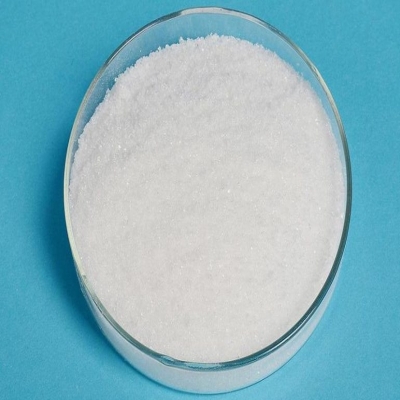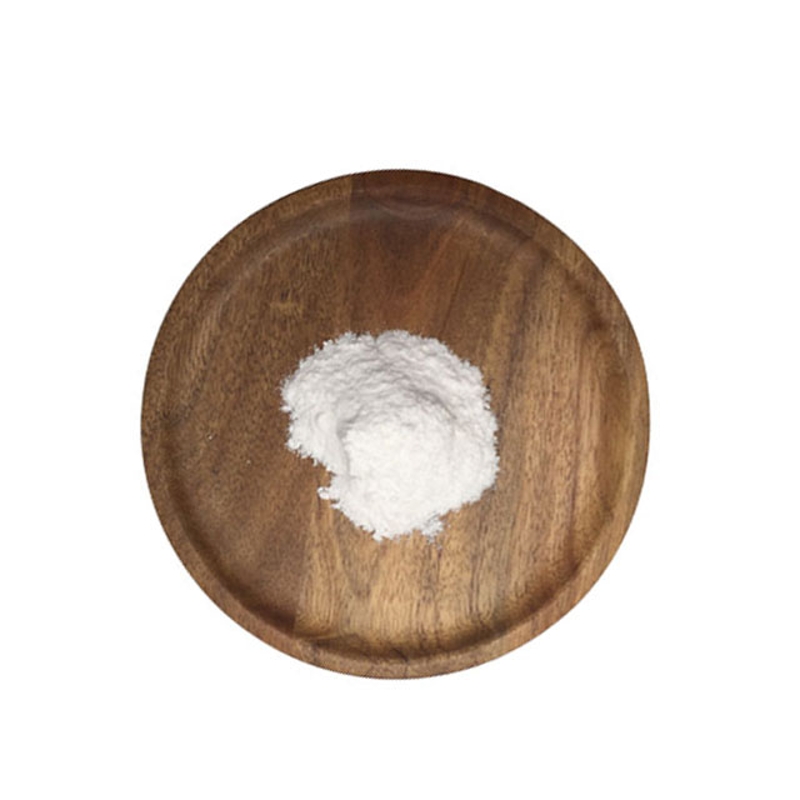-
Categories
-
Pharmaceutical Intermediates
-
Active Pharmaceutical Ingredients
-
Food Additives
- Industrial Coatings
- Agrochemicals
- Dyes and Pigments
- Surfactant
- Flavors and Fragrances
- Chemical Reagents
- Catalyst and Auxiliary
- Natural Products
- Inorganic Chemistry
-
Organic Chemistry
-
Biochemical Engineering
- Analytical Chemistry
- Cosmetic Ingredient
-
Pharmaceutical Intermediates
Promotion
ECHEMI Mall
Wholesale
Weekly Price
Exhibition
News
-
Trade Service
*For medical professionals to read only, Amoxicillin and Amoxicillin/Clavulanate Potassium are not the same! Amoxicillin/Clavulanate Potassium is a compound preparation of amoxicillin (semi-synthetic penicillin) and potassium clavulanate (β-lactamase inhibitor), which has a wide range of clinical applications
.
The ratio of amoxicillin and clavulanic acid is 2:1, 4:1, 5:1, 7:1, 8:1 and 10:1
.
Preparations include injections, tablets, capsules, granules, chewable tablets, and dry suspensions
.
1.
The difference between amoxicillin/clavulanic acid and amoxicillin.
Clavulanic acid itself has very weak antibacterial activity, but it is against Staphylococcus, Haemophilus influenzae, Klebsiella, Moraxella catarrhalis, Escherichia coli Bacteria, Neisseria gonorrhoeae, Bacteroides fragilis and other bacteria produce β-lactamase with strong inhibitory effect
.
Streptococcus pneumoniae, Streptococcus pyogenes, Streptococcus viridans, Peptococcus, and Peptostreptococcus do not produce β-lactamase, so the infection caused by them does not require the use of amoxicillin/clavulanic acid
.
Table 1 Comparison of the antibacterial spectrum of amoxicillin and amoxicillin/clavulanic acid (0%~5%)
.
Therefore, in the treatment of Helicobacter pylori eradication, amoxicillin should be used instead of amoxicillin/potassium clavulanate
.
2.
The difference between amoxicillin and clavulanic acid in different ratios.
The common ratios of amoxicillin and clavulanic acid in China are 2:1, 4:1, 5:1, 7:1, 8:1, 10: 1, 14:1
.
The antibacterial effect is strongest when the ratio of amoxicillin to clavulanic acid is 2:1
.
The ratio of amoxicillin/clavulanic acid from different manufacturers may be different, and the clinical usage and dosage are also different, and they cannot be substituted for each other
.
Manufacturer A: Amoxicillin and Clavulanate Potassium Dry Suspension (4:1) Specifications: Each bag contains 125 mg of amoxicillin and 31.
25 mg of potassium clavulanate
.
Dosage (age older than 12 years): 2 sachets each time (250 mg amoxicillin, 62.
5 mg potassium clavulanate), once every 8 hours
.
Manufacturer B: Amoxicillin and Clavulanate Potassium Dry Suspension (7:1) Specifications: Each bag contains 200 mg of amoxicillin and 28.
5 mg of potassium clavulanate
.
Dosage (age older than 12 years): 2 to 4 bags (Amoxicillin 400-800 mg, Clavulanate Potassium 57-114 mg), once every 12 hours
.
Manufacturer C: Amoxicillin and Clavulanate Potassium Granules (7:1) Specifications: Each bag contains 200 mg of amoxicillin and 28.
5 mg of potassium clavulanate
.
Dosage (age older than 12 years): 2 sachets each time (400 mg amoxicillin, 57 mg potassium clavulanate), once every 8 hours
.
3.
Be wary of the hepatotoxicity of amoxicillin/clavulanate potassium Amoxicillin/clavulanate potassium can cause cholestatic jaundice and hepatitis.
Among them, men are more likely to develop jaundice than women.
It may be the liver caused by clavulanic acid.
Damage
.
Therefore, for patients with common bacterial infections, amoxicillin/clavulanate potassium is not the first choice, and the course of treatment should not exceed 14 days
.
The incidence of hepatotoxicity is high in elderly men over 65 years old, so it is advisable for elderly men not to use it or use it with caution, or to choose a preparation with a reduced ratio of clavulanate potassium (7:1)
.
It should be reminded that the incubation period of amoxicillin/clavulanate potassium hepatotoxicity is long, which can exceed 10 days, and some even develop symptoms several weeks after stopping the drug
.
Special reminder: Co-administration is a predisposing factor for amoxicillin/clavulanate potassium hepatotoxicity, especially when it is combined with hepatotoxic drugs (such as acetaminophen, allopurinol, erythromycin, ciprofloxacin, non-steroidal Anti-inflammatory drugs, ethinyl estradiol, etc.
) are more likely to occur when combined
.
4.
Amoxicillin/potassium clavulanate medication dictated by warm water: Amoxicillin is extremely unstable.
Amoxicillin/potassium clavulanate granules and dry suspension can only be taken with warm water (≤40℃)
.
Can be taken after meals: Food has no obvious effect on the absorption of amoxicillin/potassium clavulanate.
It can be taken after meals or with milk
.
Drink plenty of water: When taking high doses of amoxicillin, it is recommended that patients ingest enough fluids and ensure sufficient urine output to reduce the possibility of amoxicillin crystaluria
.
Source of this article: Drug Evaluation Center Author of this article: gcplive Responsible editor: Dai Dai Zhangli Copyright statement Content; 2.
Interesting diagnosis and treatment stories of respiratory physicians; 3.
Heavy progress in the respiratory medicine industry; 4.
Others (contents that are of interest to respiratory physicians are sufficient)
.
Contributions are welcome to share! We will provide you with a competitive manuscript fee and a platform to showcase your talents
.
Contribution email: daijiaxing@yxj.
org.
cn (commissioned manuscripts must be replied) *The medical community strives to be accurate and reliable when the content is reviewed, but it is not about the timeliness of the published content and the accuracy of the cited materials (if any) It makes any promises and guarantees for sex and completeness, and does not assume any responsibility for the outdated content and the possible inaccuracy or incompleteness of the cited information
.
Relevant parties are requested to check separately when adopting or using this as a basis for decision-making
.
.
The ratio of amoxicillin and clavulanic acid is 2:1, 4:1, 5:1, 7:1, 8:1 and 10:1
.
Preparations include injections, tablets, capsules, granules, chewable tablets, and dry suspensions
.
1.
The difference between amoxicillin/clavulanic acid and amoxicillin.
Clavulanic acid itself has very weak antibacterial activity, but it is against Staphylococcus, Haemophilus influenzae, Klebsiella, Moraxella catarrhalis, Escherichia coli Bacteria, Neisseria gonorrhoeae, Bacteroides fragilis and other bacteria produce β-lactamase with strong inhibitory effect
.
Streptococcus pneumoniae, Streptococcus pyogenes, Streptococcus viridans, Peptococcus, and Peptostreptococcus do not produce β-lactamase, so the infection caused by them does not require the use of amoxicillin/clavulanic acid
.
Table 1 Comparison of the antibacterial spectrum of amoxicillin and amoxicillin/clavulanic acid (0%~5%)
.
Therefore, in the treatment of Helicobacter pylori eradication, amoxicillin should be used instead of amoxicillin/potassium clavulanate
.
2.
The difference between amoxicillin and clavulanic acid in different ratios.
The common ratios of amoxicillin and clavulanic acid in China are 2:1, 4:1, 5:1, 7:1, 8:1, 10: 1, 14:1
.
The antibacterial effect is strongest when the ratio of amoxicillin to clavulanic acid is 2:1
.
The ratio of amoxicillin/clavulanic acid from different manufacturers may be different, and the clinical usage and dosage are also different, and they cannot be substituted for each other
.
Manufacturer A: Amoxicillin and Clavulanate Potassium Dry Suspension (4:1) Specifications: Each bag contains 125 mg of amoxicillin and 31.
25 mg of potassium clavulanate
.
Dosage (age older than 12 years): 2 sachets each time (250 mg amoxicillin, 62.
5 mg potassium clavulanate), once every 8 hours
.
Manufacturer B: Amoxicillin and Clavulanate Potassium Dry Suspension (7:1) Specifications: Each bag contains 200 mg of amoxicillin and 28.
5 mg of potassium clavulanate
.
Dosage (age older than 12 years): 2 to 4 bags (Amoxicillin 400-800 mg, Clavulanate Potassium 57-114 mg), once every 12 hours
.
Manufacturer C: Amoxicillin and Clavulanate Potassium Granules (7:1) Specifications: Each bag contains 200 mg of amoxicillin and 28.
5 mg of potassium clavulanate
.
Dosage (age older than 12 years): 2 sachets each time (400 mg amoxicillin, 57 mg potassium clavulanate), once every 8 hours
.
3.
Be wary of the hepatotoxicity of amoxicillin/clavulanate potassium Amoxicillin/clavulanate potassium can cause cholestatic jaundice and hepatitis.
Among them, men are more likely to develop jaundice than women.
It may be the liver caused by clavulanic acid.
Damage
.
Therefore, for patients with common bacterial infections, amoxicillin/clavulanate potassium is not the first choice, and the course of treatment should not exceed 14 days
.
The incidence of hepatotoxicity is high in elderly men over 65 years old, so it is advisable for elderly men not to use it or use it with caution, or to choose a preparation with a reduced ratio of clavulanate potassium (7:1)
.
It should be reminded that the incubation period of amoxicillin/clavulanate potassium hepatotoxicity is long, which can exceed 10 days, and some even develop symptoms several weeks after stopping the drug
.
Special reminder: Co-administration is a predisposing factor for amoxicillin/clavulanate potassium hepatotoxicity, especially when it is combined with hepatotoxic drugs (such as acetaminophen, allopurinol, erythromycin, ciprofloxacin, non-steroidal Anti-inflammatory drugs, ethinyl estradiol, etc.
) are more likely to occur when combined
.
4.
Amoxicillin/potassium clavulanate medication dictated by warm water: Amoxicillin is extremely unstable.
Amoxicillin/potassium clavulanate granules and dry suspension can only be taken with warm water (≤40℃)
.
Can be taken after meals: Food has no obvious effect on the absorption of amoxicillin/potassium clavulanate.
It can be taken after meals or with milk
.
Drink plenty of water: When taking high doses of amoxicillin, it is recommended that patients ingest enough fluids and ensure sufficient urine output to reduce the possibility of amoxicillin crystaluria
.
Source of this article: Drug Evaluation Center Author of this article: gcplive Responsible editor: Dai Dai Zhangli Copyright statement Content; 2.
Interesting diagnosis and treatment stories of respiratory physicians; 3.
Heavy progress in the respiratory medicine industry; 4.
Others (contents that are of interest to respiratory physicians are sufficient)
.
Contributions are welcome to share! We will provide you with a competitive manuscript fee and a platform to showcase your talents
.
Contribution email: daijiaxing@yxj.
org.
cn (commissioned manuscripts must be replied) *The medical community strives to be accurate and reliable when the content is reviewed, but it is not about the timeliness of the published content and the accuracy of the cited materials (if any) It makes any promises and guarantees for sex and completeness, and does not assume any responsibility for the outdated content and the possible inaccuracy or incompleteness of the cited information
.
Relevant parties are requested to check separately when adopting or using this as a basis for decision-making
.







